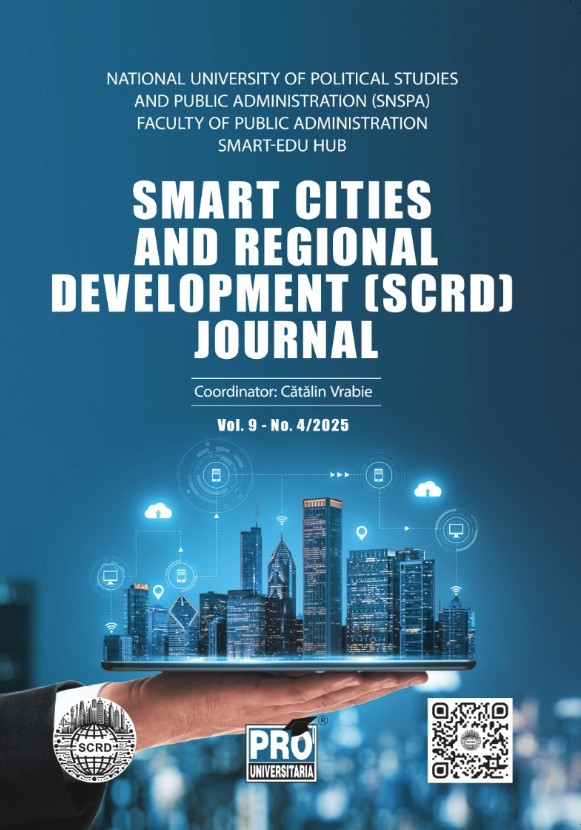National University of Political Studies and Public Administration
Vol. 9 No. 4 (2025)

This fourth issue of 2025 curates eight articles that cut across method, policy, and practice to show what “smart” really means when technology meets governance, design, and citizens. It opens with a rigorous, image-editing benchmark for re-imagining mid-20th-century “architecture of power,” comparing DiffEdit, ControlNet, and Kandinsky on accessibility and sustainability retrofits of landmark socialist-realist and modernist buildings across Warsaw, Riga, Cracow, and Bucharest - an empirical contribution that treats AI as a tool for inclusive architectural transformation rather than an aesthetic toy. It then shifts scale to the periphery: a Hungarian study distills how the smart-city canon adapts to disadvantaged rural communities, cautioning against ICT hype while foregrounding place-based capacity and community agency. Pedagogically, a new Object-Based STEM Learning framework is proposed to develop conceptual and interdisciplinary skills through non-linear, object-centred lessons teachers can operationalize in class.
Urban mobility is addressed through a data-driven ITS framework for Mashhad that integrates geo-databases, real-time exchange, and analytics, with simulated evidence of reduced congestion and emissions. Complementing these are a conceptual map of smart-city “pathways and pitfalls,” an econometric look at indoor electricity use and savings strategies in tropical Surabaya, a systematic review of the 2014–2024 literature on drivers of smart-city innovation, and a governance-oriented model for cultivating organizational culture that actually absorbs AI rather than merely adopting it. The issue closes with a horizontal audit of Romanian municipal websites, grounding digital-government ambitions in the everyday realities of interface quality, transparency, and service delivery. Together, these pieces argue for smart development that is evidence-based, human-centred, and institutionally mature.

